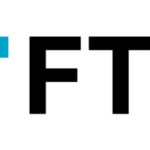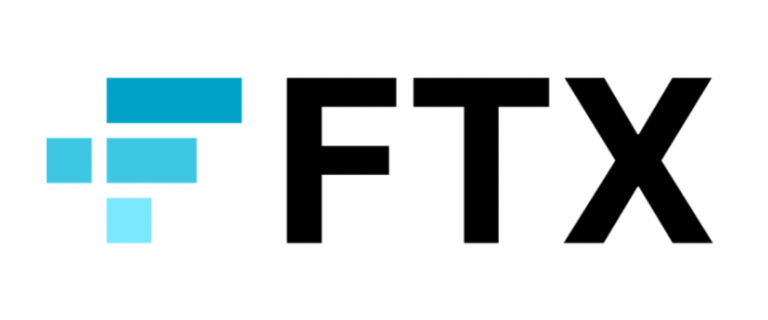In the face of economic adversities such as the COVID-19 pandemic and escalating inflation rates, a significant number of investors are gravitating towards alternative assets, including real estate, private equity, and beyond. Others are exploring investments in gold, art, or digital currencies. But what prompts this inclination towards non-traditional investment avenues?
Primarily, these financial choices are recognized for their low correlation with the standard stock market, making them more robust against its fluctuations. They contribute to portfolio diversification and offer chances for significant gains in a landscape dominated by low interest rates. Allocating resources to tangible assets such as art and gold can also serve as protection against inflation, potentially increasing the total value of one’s financial portfolio. Despite the risks involved, these assets offer a stabilizing counterpoint to traditional holdings like stocks.
Eager for more insights? In this discussion, we’ll navigate through the various alternative investment options, unpacking their benefits and limitations, and examining how they can enrich your investment strategy.
Understanding Alternative Investments
Alternative investments cover a broad spectrum of financial assets that stand apart from the traditional investment trifecta of stocks, bonds, and cash. Essentially, they represent investments beyond the conventional categories.
Historically, alternative investments have deep roots, with notable examples dating back centuries. For instance, the construction of the Transcontinental Railroad in 1852 is an early example of alternative investing, as highlighted by the research firm Preqin. The launch of the first venture capital fund in 1946 and the introduction of the initial hedge fund in 1949 further established the foundation of alternative investing.
Initially the preserve of large institutions and the wealthy, the appeal of alternative investments expanded notably after the World Wars, gaining significant momentum in the 1960s and 1970s.
Now, alternative investments play a pivotal role in numerous investment strategies. The Chartered Alternative Investment Analyst Association (CAIA) noted that by 2018, this sector accounted for 12% of the global investment marketplace, a substantial rise from its share in 2003. With an estimated worth of $13.4 trillion in 2018, private equity, hedge funds, and real estate stood out as the preferred choices.
Future projections show a promising growth curve for alternative asset classes, expected to reach a valuation of $21.1 trillion by 2025, according to a 2017 report by PwC. Additionally, the global assets under management are predicted to increase from $84.9 trillion in 2016 to $145 trillion by 2025.
The growing interest in alternative investments is propelled by various factors, which we will explore further. For now, let’s delve into the wide range of alternative assets and clarify how they differ from traditional investment forms.
Traditional and Alternative Asset Classes
| Non-Traditional Financial Assets | Established Financial Assets |
|---|---|
| Seldom exchanged on open markets | Commonly exchanged on open markets |
| Minimal to no link with equities and bonds | Often higher ease of conversion to cash, less prone to sudden changes |
| Possibility for elevated gains compared to classic asset groups | Gains are influenced by worldwide market trends |
| May experience reduced ease of conversion to cash, increased unpredictability | Typically lower thresholds for entry and reduced costs of transactions |
| Tend to involve larger initial commitments and fees for management and gains | Under strict supervision by entities like the SEC |
| Less governed by regulatory measures compared to established assets | Comparatively modest gains against non-traditional assets |
| Valuation can be complex | Affected by changes in purchasing power |
Following the 2008 financial crisis and the subsequent stock market crash, there was a notable surge in the popularity of alternative assets. Many investors, previously reliant on traditional asset classes, turned to alternatives to construct more diversified portfolios and mitigate risks.
A diversified portfolio encompasses a spectrum of assets, spanning from stocks and bonds to real estate. This diversification shields investors from excessive losses should one or more assets underperform. By spreading investments across various assets, consistent returns can be generated, even during economic downturns.
Traditional assets, such as bonds, stocks, and cash, are intricately linked to global market movements. Their performance hinges on factors like inflation, supply and demand dynamics, and geopolitical events.
In contrast, alternative assets exhibit minimal correlation with traditional stocks and bonds, as elucidated by the CFI Institute. This means they often move independently or even inversely to traditional assets. Some alternatives may yield higher returns than traditional investments, particularly during economic adversity.
Furthermore, alternative assets are typically less liquid and subject to lighter regulation compared to their traditional counterparts. This lack of liquidity can pose challenges for investors, as selling alternative assets at fair market prices may prove difficult. In contrast, traditional investments are publicly traded, facilitating higher liquidity and enabling investors to swiftly convert them into cash when needed.
Moreover, traditional assets fall under the regulatory purview of the U.S. Securities and Exchange Commission (SEC), whose mandate includes safeguarding investors’ interests and ensuring the integrity of the financial markets.
Understanding the Key Attributes of Alternative Investments

Non-traditional assets bring to the table a set of unique qualities that enhance their attractiveness to those looking to diversify their financial portfolios, extending beyond mere liquidity and oversight considerations.
Key features include:
- Minimal correlation with conventional assets;
- Possibility of incurring higher fees for management and superior performance;
- Elevated thresholds for initial contributions;
- Prospects for outperforming equities and fixed income in terms of yield;
- Employment of borrowing and intricate strategies for asset allocation;
- Options for direct involvement in the management of holdings;
- Obstacles in conducting thorough assessments and establishing market value.
For example, research firm Preqin highlights that specific non-traditional assets are mainly open to qualified investors, given their complex nature and significant entry-level financial commitments. However, more contemporary alternatives, such as NFTs and digital currencies, offer wider accessibility.
Assessing the worth of assets like real estate and other non-standard assets often presents difficulties, typically requiring expert appraisals instead of relying on uniform market indices. The singular nature of items such as collectibles, art, and agricultural land adds another layer of complexity, making it challenging to pinpoint their true market value accurately. This intricacy segues into further discussion points.
Diverse Categories of Alternative Investments
Within the realm of alternative investments, there exists a vast array of asset types, offering investors a multitude of options to diversify their portfolios.
The CAIA Association identifies several prevalent categories of alternative investments:
- Hedge funds, accessible primarily to accredited institutions and high-net-worth individuals;
- Real assets, comprising tangible properties such as buildings, land, and intellectual property;
- Private equity, encompassing investments in venture capital and various forms of equity;
- Packaged investments, including structured products like structured notes;
- Emerging alternative investments gaining traction, such as commodities, derivatives, and notably, digital assets like NFTs and cryptocurrencies like Bitcoin, Ethereum, and XRP.
Additionally, investors have the opportunity to delve into more exotic alternative assets, such as weather derivatives, cannabis-related investments, eSports ventures, and litigation funding.
Items like jewelry, classic automobiles, and rare wines also fall into this category, with reports from Bloomberg highlighting extravagant purchases, such as collectors spending millions on single bottles of aged Scotch whisky.
Considering this diverse landscape of alternative investments, it’s evident why investors may find value in incorporating them into their portfolios.
The Advantages of Diversifying with Alternative Investments
Exploring the realm of alternative assets, investors find a robust strategy to diversify and safeguard their wealth, as detailed by BlackRock. These investments not only enhance portfolio returns but also bring potential tax advantages into play.
Investments within the energy sector, for instance, may open doors to tax deductions, grants, and additional incentives.
Investors in oil and gas have the opportunity to write off various costs, including drilling and lease expenses, further sweetened by the possibility of tax breaks like the depletion allowance.
These benefits underline the growing appeal of alternative investments. Delving deeper into their advantages offers insights into making informed investment choices.
Enhancing Portfolio Diversification
Alternative investments, known for their minimal correlation with traditional assets, provide a strategic avenue for portfolio diversification. This approach serves as a buffer during stock market downturns, as highlighted by the CAIA Association.
Adopting this strategy not only curbs volatility but also aims to minimize losses while improving risk-adjusted returns.
Potential for Higher Returns
According to NuWire Investor, some alternative investments boast potential returns ranging from 50% to 100%, a significant leap over traditional asset classes.
While returns can never be guaranteed, alternative assets frequently outperform bonds, stocks, and certificates of deposit, as noted by Harvard Business School.
Protection Against Inflation
In comparison, traditional asset classes often yield lower returns, which might not be adequate for wealth protection or to counteract inflation.
Alternative investments, such as real estate, cryptocurrencies, and precious metals, can act as a safeguard against the eroding value of money. For instance, the price of gold and the anticipated rise in housing prices due to costlier building materials and dwindling housing stock underscore the inflation-hedging capability of these investments.
Gateway to New Technologies and Markets
Exploring cryptocurrencies, NFTs, and other digital assets opens avenues to emerging markets and technologies like blockchain and the Metaverse, paving the way for novel opportunities.
Cryptocurrencies, for example, have shown remarkable value appreciation, akin to traditional safe-haven assets like gold, due to their limited supply.
Regulatory Freedom
Another compelling reason to consider alternative investments is the relatively lower regulatory oversight compared to traditional markets such as stocks and bonds. This reduced regulation offers more flexibility, though it also comes with the caveat of decreased transparency and increased fraud risk.
In sum, alternative investments present a multifaceted opportunity for investors seeking to diversify their portfolios, hedge against inflation, and tap into emerging markets and technologies, albeit with considerations of risk and regulatory nuances.
Challenges in Alternative Investments
The landscape of alternative investments often presents hurdles and complexities that necessitate careful consideration before venturing in.
To begin with, traditional alternative assets like hedge funds are predominantly accessible to accredited investors for a reason. They typically demand substantial minimum investments and are accompanied by a myriad of fees. Novice investors risk significant financial losses if they lack the requisite knowledge. However, it’s worth noting that digital assets may entail comparatively lower risks, contingent upon investment amounts and the investor’s expertise.
Secondly, alternative assets present valuation and liquidity challenges, as underscored by Forbes. Their relatively unregulated nature adds another layer of risk. Furthermore, these investments are inherently intricate, each carrying its own set of legal implications. For instance, the regulatory framework governing real estate investments differs from that of private equity or hedge funds.
Moreover, alternative assets exhibit other potential drawbacks, including:
- Lack of transparency;
- Unique risk profiles;
- High transaction costs;
- Extended lock-up periods.
It’s essential to acknowledge that these investments may not always meet expectations. Additionally, investors should be wary of hidden risks and adverse tax implications associated with certain alternative assets.
Navigating these complexities demands thorough due diligence and perhaps seeking guidance from financial professionals before committing to alternative investments.
Evaluating the Suitability of Alternative Investments

Now that you’ve gained insight into the advantages and drawbacks of alternative investments, you might be contemplating your next move. Should you allocate your funds to real estate and other alternative assets, or adhere to the traditional trio of bonds, stocks, and cash?
The answer hinges largely on your risk tolerance.
- According to Harvard Business School, one effective strategy to mitigate risks is maintaining a diversified portfolio. The greater the diversity of your assets, the more secure your investments become;
- Furthermore, recent shifts in the financial landscape have made alternative assets more accessible. Barron’s highlights that nowadays, it’s feasible to find alternative assets with reasonable minimum investments and lower barriers to entry. For instance, small investors can purchase fractional shares of Bitcoin or partial stakes in properties. Alternatively, investing in real estate investment trusts (REITs) offers exposure to real estate without the complications of physical ownership;
- Implementing any of these strategies can enhance portfolio diversity without imposing significant financial burdens;
- Experts interviewed by Barron’s concur that alternative assets are well-suited for investors willing to tolerate illiquidity and seeking improved risk management. While allocating up to one-third of a portfolio to alternative investments might be prudent in some cases, starting with a range of 10% to 20% is advisable for the average investor, as suggested by the Schrieber Group.
However, caution is warranted. U.S. News and World Report warns against advisors and fund managers who stray into unfamiliar territories, risking investors’ capital. These professionals may lack the expertise required to navigate certain asset classes effectively.
The Mainstream Surge of Alternative Assets
The CAIA Association forecasts that by 2025, alternative assets will constitute 18% to 24% of the global investment market. This significant shift is propelled by the maturation of emerging markets, persistently low interest rates, and advancements in digital technology, among other factors.
As the investor base expands, fees are experiencing a downward trajectory. PwC observes that factors such as heightened competition and the advent of low-cost products are contributing to this trend.
Against this backdrop, it’s evident that alternative investments are increasingly penetrating mainstream portfolios. Presently, these securities represent approximately 5% of the average investor’s holdings, as per the CAIA Association.
While it’s true that ultra-high net worth individuals allocate over half of their assets to alternative products, the participation of retail investors is on the rise. With the advent of modern investment vehicles like Bitcoin and NFTs, these opportunities are no longer solely the domain of the affluent.
Consider NFTs, for instance. In 2021, this market surged to a staggering $22 billion. Established brands such as Nike and Coca-Cola are actively trading these assets on dedicated platforms, drawing in a global pool of buyers.
With the average NFT priced below $2,000, retail investors can readily dip their toes into this market and explore its potential.
Furthermore, individuals can access alternative assets as accredited investors, a status attainable by meeting specific criteria:
- Possessing a net worth of at least $1 million;
- Earning an annual individual income of $200,000 or more;
- Achieving an annual household income of $300,000 or more;
- Being employed by an investment fund;
- Holding a Series 7, 65, or 82 license.
While these requirements may seem daunting, they are within reach for many investors. Nevertheless, leveraging the right technology and honing relevant skills are crucial for optimizing investment opportunities in this dynamic landscape.
Cutting-Edge Technology to Elevate Your Investment Strategy
Exploring the surge in interest towards non-traditional investments? The advancements in technology play a significant role in this shift, alongside the previously mentioned factors.
Forbes highlights how tech innovations have democratized access to alternative investments, breaking down barriers that once limited them to institutional investors and the affluent. Today’s digital platforms empower any investor to discover, assess, and manage investment opportunities effectively.
Platforms like Morningstar simplify the process of finding high-performing funds and alternative assets, offering a wealth of information for informed decision-making.
The integration of data analytics, artificial intelligence, and cutting-edge tech tools empowers investors to assess risks, explore new markets, and fine-tune their investment portfolios for optimal performance.
Digital advancements also facilitate smarter investment decisions, enabling quicker transactions at reduced costs.
- Take Coinbase as an example: this digital marketplace allows for the buying and selling of cryptocurrencies, providing users with regular market insights, educational content, and various resources to aid their investment journey;
- Specialized platforms such as PitchBook cater to niche markets, offering venture capital and private equity investors valuable data on companies, funds, and advisors;
- Kubera stands out by offering an integrated solution for managing personal assets, allowing investors to monitor their entire investment portfolio in one location, alongside access to live market data.
Conclusion
While diversifying your portfolio is a wise strategy, it introduces the complexity of managing an array of assets. The proliferation of investments makes it increasingly challenging to maintain oversight. Hence, consolidating all investment information in a single, accessible platform is the most efficient approach to managing your assets.




















+ There are no comments
Add yours